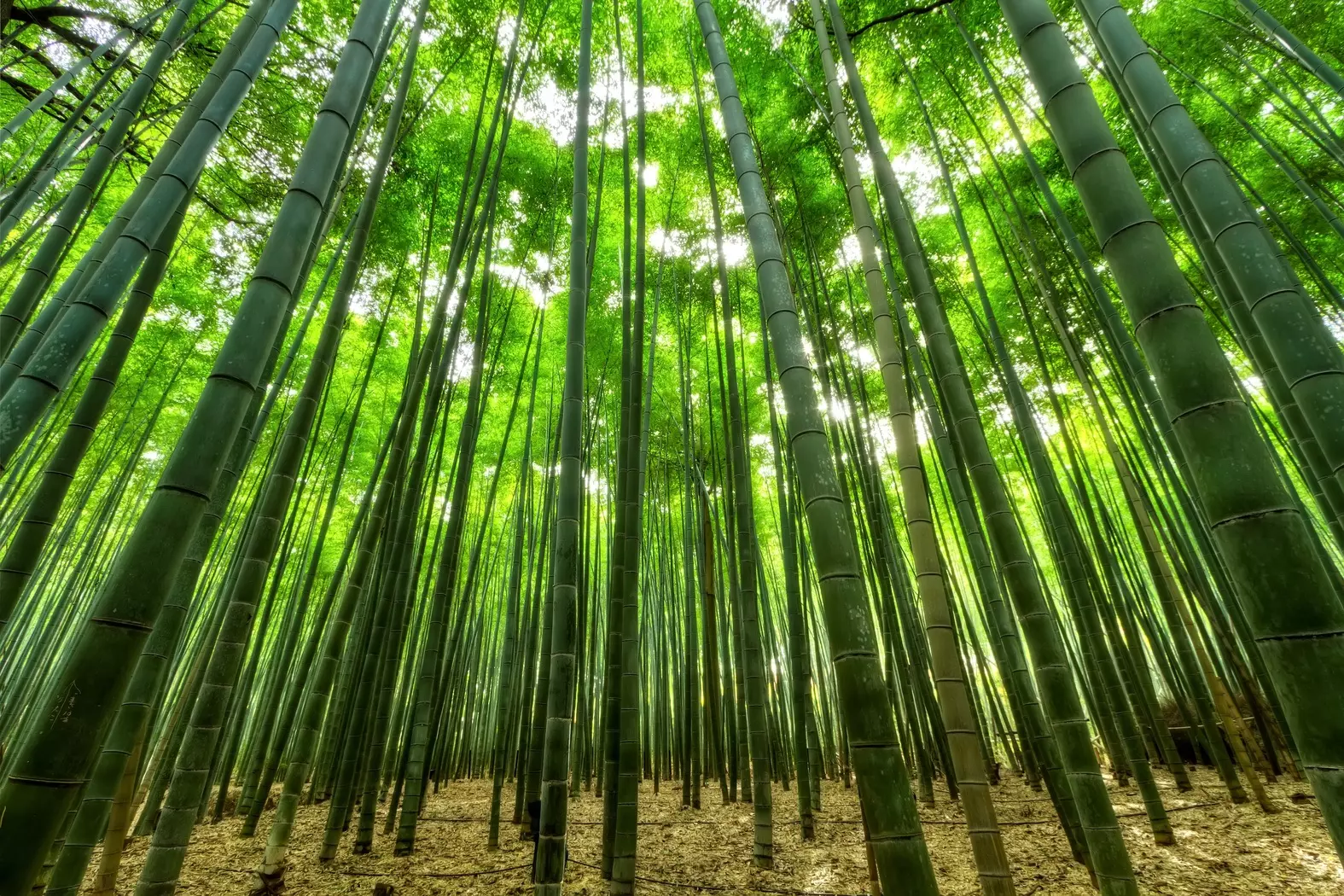What are the plant champions of the world?
God, in all His wondrous creativity, created thousands and thousands of different plant species. Here are four that can be called champions.
What is the smelliest plant?
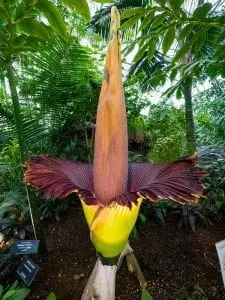
There is a plant from Indonesia called the corpse flower, whose flowers have the fragrance of ammonia, rotting flesh, and rotten eggs strong enough to have made people faint.
This flower is also among one of the largest flowers in the world. It grows a vase-shape flower four feet tall which emerges from a very large tuber that weighs 150 pounds. Out of the four foot base flower rises an eight foot spike with thousands of tiny flowers. The upper part of the spike produces the smell that can last up to eight hours at a time.
Why such a horrible smelling flower? Because this flower attracts carrion (dead animals) loving insects, such as flies and beetles to carry out pollination. You would think that the rain forest of Indonesia would be the stinkiest place on earth, but fortunately this plant blooms only once every three to ten years and then just for two days.
What is the fastest moving plant?
Plants don’t have muscle power, but a few of them can still move at incredible speeds.
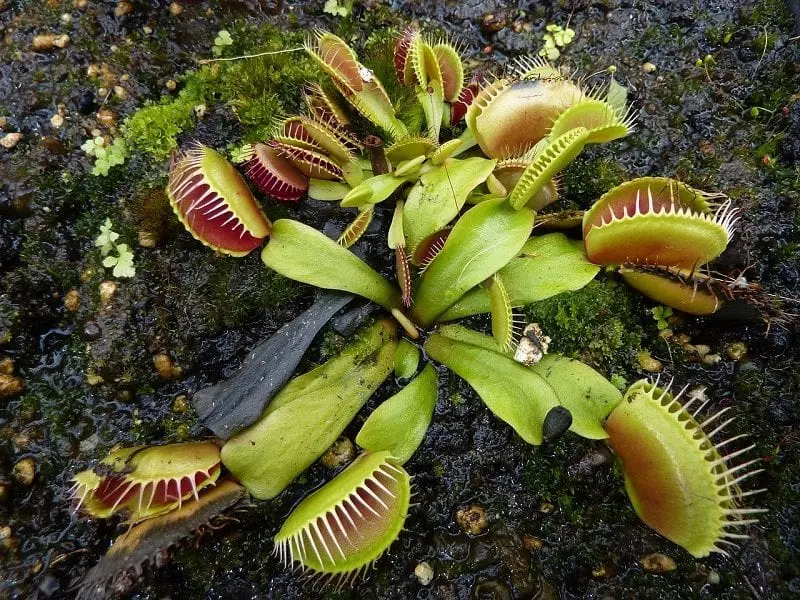 The Venus flytrap uses elasticity to set its two-lobed snap-jaw trap. The Venus flytrap lives in the nitrogen poor bogs of the southeastern United States. The insects that are trapped provide the nitrogen and other essential minerals that this plant needs to stay healthy.
The Venus flytrap uses elasticity to set its two-lobed snap-jaw trap. The Venus flytrap lives in the nitrogen poor bogs of the southeastern United States. The insects that are trapped provide the nitrogen and other essential minerals that this plant needs to stay healthy.
Here is how the trap works:
- The upper side of each lobe is stretched more than the underside and the lobe curves back by tension, like a bow.
- The Venus flytrap then produces nectar to lure insects into its deadly trap.
- In each trap there are trigger hairs that sense movement when touched.
- When two or three hairs get touched it will send chemical–electric signals that will release the tension instantaneously shutting the trap.
The Venus flytrap doesn’t waste its energy if something non-living inadvertently enters the trap by requiring two or more hairs to be touched within a certain amount of time. If only one hair is touched, the trap won’t shut.
Once the trap is shut on a unsuspecting fly or other insect, the prey is slowly digested. After about a week, the trap is once again opened up waiting for its next victim.
What is the fastest growing plant?
The bamboo is the fastest growing plant in the world. Bamboo is a highly unusual plant and is nothing more than a giant woody grass. There are around 1,250 species and they do all of their growing when they are young plants. Once this plant matures, a bamboo stops growing so it can put its energy into sending out shoots. In time, a clump of bamboo can become so thick it is impossible to push through.
The tortoiseshell bamboo is one of the tallest and among the fastest growing. One shoot is recorded as growing three feet in 24 hours—that’s 1.6 inches per hour! Another bamboo grew 65 feet 6 inches in just eight weeks.
What plant has the largest canopy?
The banyan tree of southeast Asia has the largest canopy with a diameter of 1,378 feet.
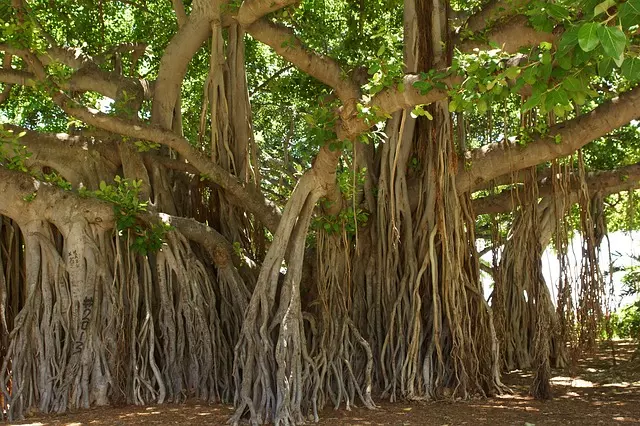
How does it manage to grow such a large canopy? By sending prop roots from its branches to the ground. The banyan tree is one of 2,000 species of fig trees. Many of these figs will send down roots from their branches as supports, but no species of fig can do so on a grander scale than the banyan tree.
At the Indian Botanic Garden in Calcutta there is a banyan tree with 2,800 prop roots making it is the largest known banyan. It is very common in southern Asia that these trees are cared for and used as markets, schools, or a place where villagers meet.
What plant produces the biggest seed?
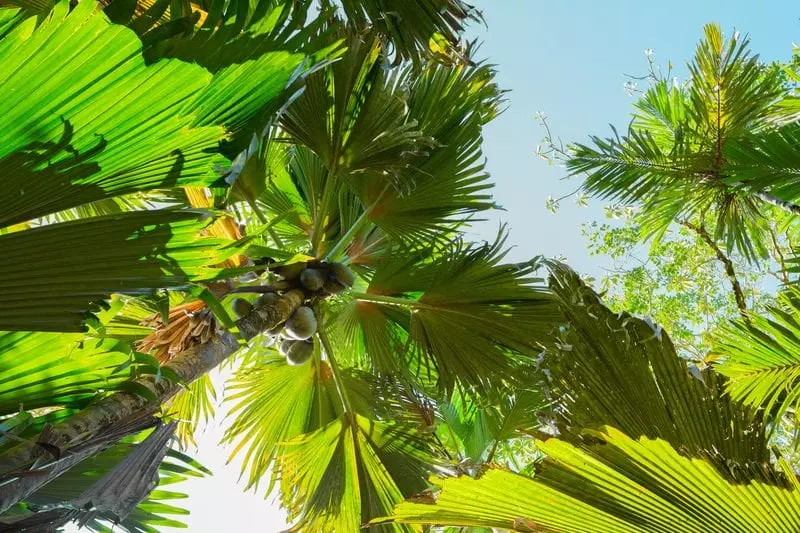
The coco-de-mer palm grows on the southern Pacific islands of Seychelles, Praslin, and Curicusc islands. This giant member of the coconut family grows to a height sometimes exceeding 100 feet. The nuts from these trees are sometimes called double coconuts and can be as large as 19 inches across and weigh 48 pounds.
This palm is incredibly slow growing. It takes nine months for the seed to germinate and sprout its first leaf. And it takes another 20-40 years to produce its first flower. The seed it then produces take up to ten years to ripen.
Then God said, “Let the land produce vegetation: seed-bearing plants and trees on the land that bear fruit with seed in it, according to their various kinds.” And God saw that it was good. Genesis 1:11

